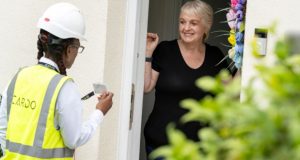According to a new report from the Urban Land Institute C Change programme, progress on the decarbonisation of real estate portfolios is being held back by a lack of understanding and collaboration between property owners and occupiers.
It states if “better alignment between the two parties is not prioritised, it has the potential to increase total emissions from the built environment over the medium to long-term as real estate decisions are often medium to long-term commitments”.
The report ‘Occupiers and owners: Faster and further on the pathway to decarbonisation together‘ indicates that a fundamental questioning of many current working practices and structures is required, as is a deeper understanding from both sides on how decarbonisation is being approached by each party.
Presenting the occupier’s perspective, the report reveals there are often “missed connections” between both parties where a lack of understanding on broader decarbonisation goals or an absence of common language is holding back progress. With many occupiers often more focused on emissions from other aspects of their businesses, such as manufacturing or supply chains, the contribution that buildings make to the aggregate 37 per cent global emissions from real estate can be underestimated.
Lisette van Doorn, CEO, ULI Europe, commented: “At the start of the C Change programme two years ago, the issue of collaboration between occupiers and landlords in decarbonising buildings was identified as one of the key bottlenecks to progress. This report demonstrates the main issues with collaboration, which are often related to historic ‘transactional’ relationships, variations in decarbonisation objectives and perspectives, and longstanding approaches to areas such as lease structures, contracts, and fit outs, which all need careful reconsideration to enable the industry to speed up progress and for owners and occupiers to collaborate more constructively and efficiently. This report provides an important roadmap to improve this situation, outlining many of the critical barriers and hindrances, and contributing important recommendations to improve the situation and accelerate progress.”
This new research is based on interviews with heads of real estate for multi-national organisations responsible for large occupational real estate portfolios and represents a wide range of industry sectors including banking and finance, education, engineering, law, logistics and distribution, media, manufacturing, retail, and technology. It provides an occupier perspective on leased real estate portfolios and decarbonisation strategies, highlighting the barriers hindering the most effective, sustainable approaches to addressing this shared responsibility, and outlines recommendations to align the interests of both parties and accelerate progress in decarbonising portfolios.
van Doorn added: “At the heart of progress on this topic is that owners and occupiers build a trusted long-term partnership that considers each other’s objectives, which requires each side to be open about their perspectives and the wider concerns faced by each stakeholder. The feedback we received from occupiers has been very encouraging in this respect, recognising the need for a more open and transparent partnership.”
Hindrances to progress also include occupiers not factoring in embodied carbon emissions when selecting new space to lease. This is largely due to a narrow focus on the reduction of emissions aspect of the various Greenhouse Gas (GHG) Protocol scopes 1, 2 and/or 3 for leased real estate particularly, which lacks an holistic building approach as embodied carbon emissions are not part of any of these scopes. This often results in a preference for new build properties which are operationally net zero, while total carbon emissions exceed those of a retrofitted building.
A more holistic approach on total lifecycle emissions and wider environmental considerations would clearly better inform decision making, factoring in embodied carbon to improve decision making around new build versus existing real estate.
At a more tactical level, common processes related to factors such as lease contracts and renewals/extensions can also hinder progress. Currently, there is no standard due diligence questionnaire used by occupiers when searching for space. Nor is there a standard green lease, with most lawyers using their own version, and there is a tendency for green lease clauses to be sacrificed first in negotiations. Also, when renewing an existing lease agreement, tenants have the right to renew leases on the same terms but seeking changes such as the opportunity to include ESG considerations could trigger a full and potentially costly or disadvantageous renegotiation of lease terms.
Going forward, the report argues for more standardised practices including in the approach to due diligence for occupiers seeking space, and for ESG considerations to be included as standard in heads of terms with minimum requirements considered as “non-negotiable”, recognising that such changes will require education and industry wide commitment.
At Facilities Management Journal, our commitment is to deliver content that meets the needs and interests of our readers. To ensure we continue to provide valuable insights and engaging articles, we invite you to participate in our Reader Survey.
Your opinion is invaluable in shaping the future direction of our magazine. By sharing your thoughts, preferences, and suggestions, you play a crucial role in enhancing the content and overall experience for our readership.
To access the survey, please click on the following link: https://www.surveymonkey.com/r/9XVVXYP.





